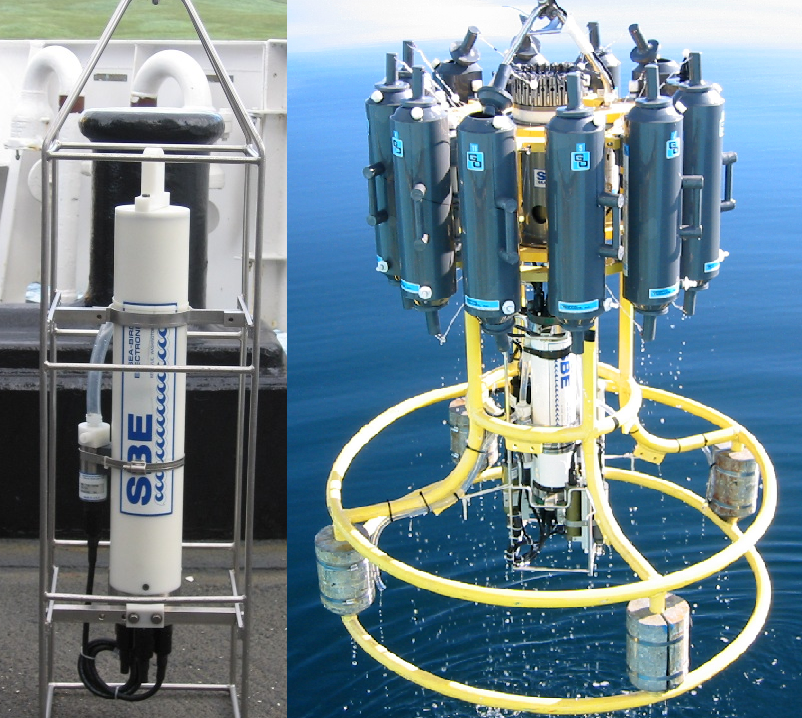A new and very interesting study just came out in the journal Proceedings of the National Academy of Sciences (PNAS) the other day titled “Long-term fate of nitrate fertilizer in agricultural soils”. This paper addresses some very interesting and extremely important questions using isotopic geochemical tools.
The question central to this paper is what happens to all of the nitrogen in the fertilizer that we spread on our crops? This question is a very popular one in the nitrate contamination field (haha, pun intended) and this paper attempts to look at the long term fate of this molecule, which is an aspect that is not very well understood. The paper looks at a field that had nitrate fertilizer labelled with the stable isotope nitrogen-15 spread over it for three decades to see what the fate of this nitrogen is? In other words, where does it go? Does it stay in the same place? Is it still available to plants or does it end up in the groundwater or surface water? In fact, the authors found that 61-65% of the applied fertilizer was used by plants, and 12-15% was still in the soil. Furthermore, 8-12% of the nitrogen added had entered the hydrosphere during the 3 decade observation period and the fertilizer remaining in the soil was still available to crops and to leak into groundwater over the upcoming fifty years.
Let’s take a quick step back though. Why is nitrogen, an element that is essential to the health of plants and one of the basic elements found throughout the the natural world being considered a contaminant? There are two main reasons that having excess nitrate, which is NO3, in the hydrosphere is a problem. The first is eutrophication. Eutrophication is a phenomenon that occurs when excessive nutrients enter a water body. The additional nutrients cause massive plant growth including algae. This leads to an occurrence called an algae bloom, pictured below, that covers the water surface, preventing other plants from photosynthesising and leading to their death. This mass die-off consumes all of the oxygen in the water body and leads to the death of the entire food web. In short nutrient overloading leads to the apocalypse.

Algae bloom in Florida. (Source)
The second reason that high levels of nitrate are a concern is because of a health problem associated with people and animals consuming excess nitrate called Methemoglobinemia, which is also known as blue baby syndrome. This disease affects the chemistry of the blood and prevents the transfer of oxygen from the blood to tissues. This occurs most often in babies under 6 months of age and can be caused by elevated nitrate levels in their drinking water. It is for this reason that the maximum allowable concentration of nitrate in most place is 10 ppm.
Ok, back to the study. So the authors found that there are three places where the added nitrate can end up over time and this finding is pictured in the graph below. What this figure is showing is that immediately after adding the fertilizer in 1983/84 the total load of N03 in the plants goes up 50% immediately, which is good for growing things. A further 30-40% is trapped in soil organic matter. The total of both these reservoirs roughly equals 100% of the expected NO3 load.
However, over time the amount in the plants slowly increases while the reservoir of labelled NO3 in the soil organic matter decreases at a much faster rate. This loss of NO3 from the SOM is being found in sampling lysimeters showing that it is leaching off the SOM and ending up in groundwater. The NO3 that is trapped in the SOM mixes with the existing nitrate that is already there and is then slowly leached over the next several decades. In fact, the authors found that 0.4% of the labelled nitrate leached per year and during the study period 8-12% of the labelled fertilizer ended up leaching off the SOM into the groundwater! This may not seem like a lot but considering the massive volume of fertilizer spread in agricultural regions each year this can add up to a huge annual influx of NO3 to the hydrosphere and have serious environmental repercussions.

Cumulative budget of 15N-labeled fertilizer nitrogen based on mass and isotope balances for plants, soil organic matter (SOM), and nitrate in lysimeter outflows for Lys S (full symbols) and Lys W (empty symbols). Image from Sebilo et.al. (2013) and used according to PNAS copyright guidelines for educational purposes only.
The next thing the authors tested, which is pictured in the figure below, was to see how far into the future the labelled fertilizer will continue to leach to the groundwater. The data points that have already been collected are pictured and a decay function, such as exponential decay, is fitted to them. As you can see the decay function fits the existing data nicely and therefore can be used to predict what could happen in the future. The graph is showing that it will take another five decades for the values 15N in the soil to return to background i.e. pre-application of the 15N labelled fertilizer levels. Basically, this means that the single application of 15N enriched fertlizer in 1981 will have an influence on soil nitrate and hence leaching for 100 or more years.

Decay functions fitted to observed δ15N values of soil organic matter from Lys S (red) and Lys W (blue). The model suggests that it will take circa 100 y to reach the background δ15N values of circa +5‰ observed before tracer application. Image from Sebilo et.al. (2013) and used according to PNAS copyright guidelines for educational purposes only.
To summarize, the study by Sebilo et.al. found that the fertilizer that gets added to fields all over the world is not immediately taken up by plants. In fact, it sits around in soil organic matter and can slowly leach into groundwater over 50 or more years! This is a major cause for concern and understanding the dynamics of nitrate in soil over long time periods will help us avoid some of the potential environmental or health problems that fertilizing could cause. Indeed, we now know that simply waiting for the nitrate we add to disappear naturally is not an option as the SOM provides a continuous source of nitrate.
Here is the link that alerted me to this article in the first place:
Reference:
Mathieu Sebilo, Bernhard Mayer, Bernard Nicolardot, Gilles Pinay, and André Mariotti
Long-term fate of nitrate fertilizer in agricultural soils
PNAS 2013 110: 18185-18189.
PDF: http://www.pnas.org/content/110/45/18185.full.pdf+html
Thanks for reading, especially if you read the whole thing!
Matt










